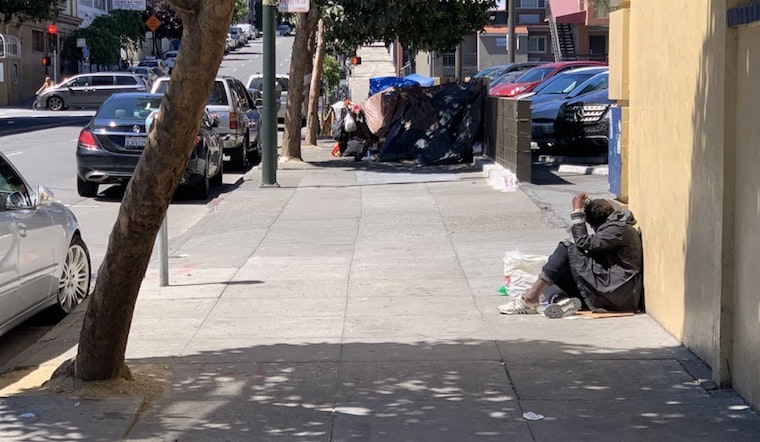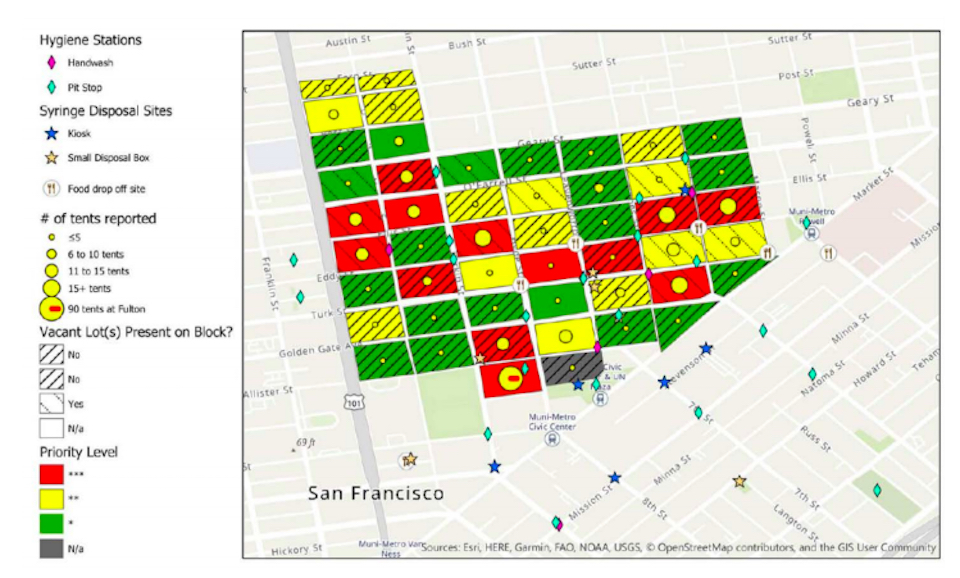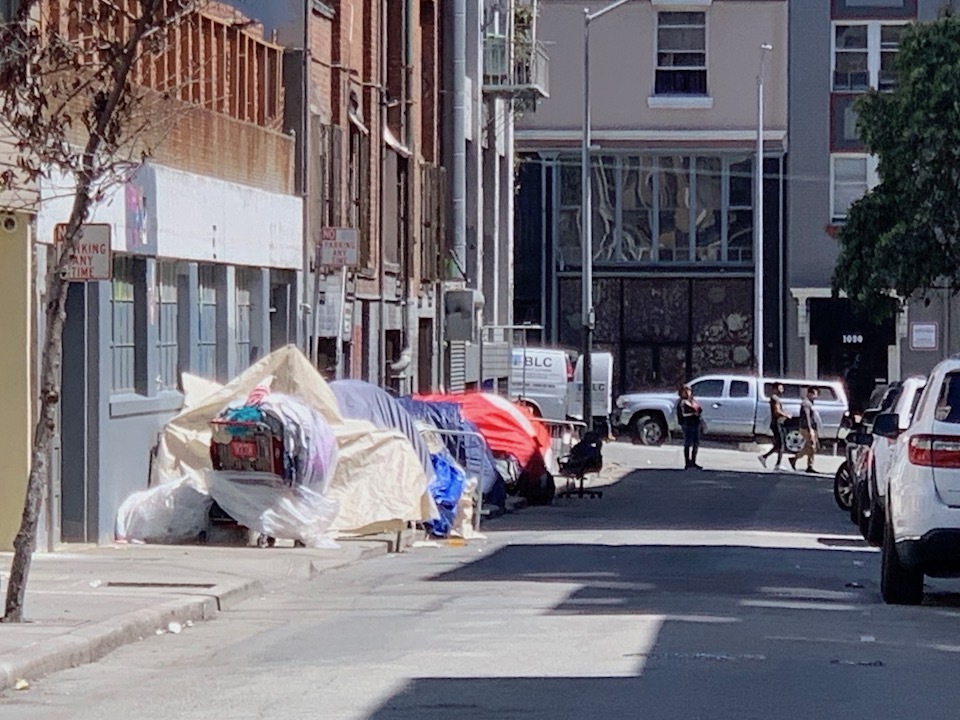
Conflict over the city's handling of health and safety issues in the Tenderloin continued to evolve yesterday, as the San Francisco Human Rights commission released a plan for the neighborhood.
Representatives from UC Hastings College of Law, which filed a lawsuit against the city on Monday, say the plan doesn't do enough to address their concerns.
The 32-page, block-by-block Tenderloin Neighborhood Plan for COVID-19 is the product of input from community members and neighborhood organizations, in a process conducted by HRC in the last two weeks of April.
The plan divides the Tenderloin by block, and prioritizes specific blocks based on the magnitude of the existing encampments and direness of current conditions, based on HRC’s “various assessments and discussions with community stakeholders.”

“These blocks present unique challenges to the community and represent an opportunity for bold, multi-sectoral action to improve the health and safety of those in the area,” the plan states.
But UC Hastings Director of Operations Rhiannon Bailard expressed concerns that the plan's proposed actions are more likely to exacerbate existing issues than resolve them.
In response to HRC's request for comments on the plan, provided to Hoodline by email, Bailard wrote: “After doing a detailed review of the draft plan, it appears that the actions proposed are intended to sanction the continuation of tents and encampments on the sidewalks by providing resources and services on those same sidewalks and, possibly, adjacent streets.”
The plan identifies the Fulton Mall as a priority site for “safe camping,” but limits its capacity to 50 tents. Recent counts suggest the location currently houses 90 tents, and if it is deemed to exceed capacity, “individuals not accommodated on Fulton Mall will likely move to the streets of the Tenderloin unless there are alternative shelter options provided,” Bailard wrote.

Tents are already blocking business's doorways, "literally keeping owners from opening their essential business," according to Tenderloin Merchants Association president Aref Egaali.
"The entire sidewalk is [already] unsafe to walk upon and it is impossible to practice social distancing," he said.
Bailard wrote that the plan's proposal to shut down multiple streets to vehicle traffic, opening them for use by pedestrians and cyclists, suggests the plan intends to "[release] the sidewalks to unhoused individuals, rather than clearing them for use by all residents, businesses, and visitors in the neighborhood."
“[B]y closing streets and permitting encampments on the sidewalks," she wrote, "particularly without a strategic action plan for enforcement of drug laws, the drug dealing epidemic will get immediately worse, not better.”
While the plan includes a line item about drug dealers among the neighborhood’s safety and wellness hazards, Deborah Mallgrave, partner with Greenberg Gross LLP, who is representing UC Hastings in the ongoing lawsuit, said it includes no specific action items to reduce their presence on Tenderloin sidewalks and street corners.
Max Barnes, interim public information officer on homelessness for the Emergency Operations Center, said SFPD is working to address drug-related crime in the neighborhood.
“SFPD is focused on curbing the criminal activity around drug dealing in the neighborhood and will continue to do so as the Tenderloin Plan is carried out,” he said.
Another outstanding concern is the lack of clear timelines in the plan. Bailard wrote that at the very least, UC Hastings would like to see a clear timeline for provision of safe alternative camping sites, given the limitations set for the Fulton Street mall location.

Barnes said implementation of the plan will be “iterative and dynamic as we seek to directly address the public health crisis on our streets.”
District 6 Supervisor Matt Haney did not respond to requests for comment on the plan by press time.
If you want to be involved in discussing and improving the plan going forward, you can contact [email protected].









